Novels have been a source of material for cinema since the earliest days of the global film industry. Indeed, film adaptations have become so prevalent over the decades that screen rights are often negotiated and sold before a book has even been published. When a novel becomes commercially successful, a subsequent movie version is not as much anticipated as expected.
One of the more interesting adaptations of the 1980s came when French filmmaker Jean-Jacques Annaud directed The Name of the Rose, based on the novel by Italian author Umberto Eco. It is interesting because Eco’s novel was such an unexpected literary sensation in the first place, and because while Eco’s work was specifically praised for its postmodern approach Annaud’s film is by contrast a decidedly modernist text. Both novel and film succeed creatively for different reasons. Together they make a strong argument for why fictional works should be adapted from one medium to another at all.
The Name of the Rose was first published in 1980 by Milan-based publisher Bompiano. Despite more than two decades of work in literary theory, semiotics, and medieval history, it was Umberto Eco’s debut novel. Three years after its Italian debut it was published in English by Harcourt with a translation by William Weaver. Both Italian and American editions were hugely successful; to date the novel has sold in excess of 50 million copies.
In the year 1327 the Franciscan friar William of Baskerville, along with his young assistant Adso of Melk, arrives at a Benedictine abbey to participate in a theological disputation between the Franciscans and the Pope over definitions of poverty. There has recently been a murder, and William – as a former inquisitor – is asked to investigate the crime.
It is noted that Eco introduces all of the expected elements of a mystery story to William’s investigation. His detective’s name has literary echoes – William’s birthplace reflecting Arthur Conan Doyle’s The Hound of the Baskervilles (1902). There is a string of murders and a series of clues. The abbey houses hidden rooms and corridors, and a carefully guarded secret. William attempts to solve the crimes using logic and ordered thinking – and essentially fails in his task because his task lies beyond such structured reasoning. He follows a series of signs to their conclusion, but upon reaching the destination realises those signs led him there by chance. ‘I behaved stubbornly,’ William admits, ‘pursuing a semblance of order, when I should have known well that there is no order in the universe.’[1]
The detective format works in contrast with the novel’s medieval setting, since the detective story is by-and-large a 19th century invention. The genre was not popular in Italy until the early 20th. Thanks to the abbey’s hidden library, it is also a somewhat self-referential work: a book about books, as it were. ‘I rediscovered,’ Eco later explained, ‘what writers have always known (and have told us again and again): books always speak of other books, and every story tells a story that has already been told.’[2]
Eco’s characters engage in spirited, often antagonistic, debate about literature and art, religious dogma, and ethics. These debates are clearly supposed to be as important to the novel as the murder narrative.
This is all lofty material for what is superficially a mystery story, and of course it was the combination of genre and setting – a medieval detective story – that attracted the attention of filmmakers.
The first director to approach Eco regarding a film adaptation of The Name of the Rose was his friend Marco Ferreri, whose most recent work was the internationally celebrated Tales of Ordinary Madness (1981). In a lecture, Eco recalled that ‘among other nice things he said: “Moreover, I don’t even need to rewrite the dialogues, because they look as if they were designed for a movie”. I felt astonished, and a little upset, because certainly I didn’t write thinking for a movie script.’[3]
Ferrari was not alone in recognising The Name of the Rose’s cinematic potential. Soon after its successful publication Eco was approached directly by French filmmaker Jean-Jacques Annaud, pleading for permission to adapt the novel.
Annaud is an atheist: an odd philosophy to have when one glances over his filmmaking career, which include not just The Name of the Rose but faith-dominant films like Seven Years in Tibet (1997) and Notre-Dame on Fire (2022). ‘I come from a completely atheist, totally secular, and republican family,’ the director once noted. ‘The hereafter was an abstract notion in our house, but I remember that around the age of 10-12, I felt something was missing… I made up for it by developing a great interest in medieval architecture. I spent my pocket money on records of sacred music, Gregorian canticles, Tibetan chants, Sahelian songs, Bach oratorios, and Frescobaldi toccatas. In summer, at my request, rather than go to the beach, we toured Breton church closes or the Romanesque basilicas in Auvergne. I can’t recite a single prayer, but I have deep respect for other people’s forms of worship and faith.’[4]
‘I spent time in monasteries,’ said Annaud, ‘and I realized that the search for honesty and judgment on who you are is important, therefore people become monks or priests.’[5] Beyond religious belief, Annaud had been entranced by Eco’s novel – its themes, its historical period, and its setting – and honestly believed he was the best possible choice for directing its film adaptation.
Annaud did not boast a long career when met with Eco, but he could boast of a broadly acclaimed one. His directorial debut was Black and White in Color (1976), a French-funded satire shot in Côte d’Ivoire that remains the only Ivorian film to win the Academy Award for Best International Feature. His 1979 comedy-drama Coup de tête (aka Hothead) won one of its stars a Cesar Award for Best Supporting Actor. At the time of meeting Eco Annaud had completed his third film: the French-Canadian co-production Quest for Fire, about a Paleolithic tribe seeking the ability to control fire to avoid freezing to death. This film would win two Cesars, including Best Picture, as well as an Oscar and a BAFTA Award for make-up, and five Canadian Genie Awards – including Best Actress, sound editing, and costume design.
Annaud was ultimately successful in pitching himself to Eco, and in making The Name of the Rose his fourth directorial feature. In developing the project he partnered with German producer Bernd Eichinger, who had co-purchased the bankrupt studio Constantin Film to establish Neue Constantin Film in 1979. They were far from alone in seeking film rights to the book, and beat out a healthy amount of competition including Hollywood producer Arnon Milchan.
The first key writer hired to develop Annaud’s Name of the Rose screenplay was Gérard Brach. His draft, which enthusiastically embraced the minutiae of Eco’s novel, was ultimately so long that the finished film would exceed four hours. With Brach’s screenplay deemed unworkable, Eichinger next hired Hollywood scribe Howard Franklin. While Franklin’s writing had not yet resulted in a finished production, he would subsequently be credited for the screenplays of Someone to Watch Over Me (1987), Quick Change (1990), and The Man Who Knew Too Little (1997). Franklin took the opposite approach to Brach, emphasising the cinematic qualities of the novel without anywhere near as much detail or texture.
The third writer was English screenwriter and director Andrew Birkin. ‘There had been a couple of previous writers on the project before me,’ he said. ‘A French writer who’d done a rather good script, but it was four hours long, and an American version, which I took to calling “Raiders of the Lost Monastery”.’[6] Birkin’s draft was essentially the version that Annaud filmed. Brach and Franklin both received on-screen credit, as did regular Annaud writer Alain Godard who undertook a rewrite at the director’s request.
It was Bernd Eichinger who first suggested Sean Connery as William of Baskerville. He was not initially a popular choice: Annaud could not see the Scottish actor in the role, and after a long fallow period he was considered to be something of a ‘has-been’ with mass audiences. His latest film was Never Say Never Again (1983), which returned him to the role of James Bond that had originally made him famous; now he appeared type-cast by it. His films of recent years were littered with commercial flops, including disaster picture Meteor (1979), science fiction film Outland (1981), drama Five Days One Summer (1982), and the satirical comedy Wrong is Right (1982). By coincidence, Andrew Birkin had worked with Connery before, having served as second-unit director on the James Bond sequel Diamonds Are Forever (1971).
So unimpressed with the idea of Connery were Columbia Pictures that they informed Eichinger and Annaud that casting him would provoke the studio to back out of funding the film. When they went ahead and cast him anyway, the studio made good on its threats and withdrew its participation. The Name of the Rose was ultimately funded by a variety of companies and groups, including television networks ZDF (West Germany), France 3 Cinema, and RAI (Italy), and production firms Le Filmes De Ariane, Nelson Entertainment, and Cristaldi Film.
Annaud and Eichinger personally flew to Los Angeles to deliver the current screenplay and to pitch the role to Connery.‘One’s response is always to the writing,’ Connery later said. ‘There are fewer and fewer top writers now who can deal with the nuances of character. I was absolutely caught by Name of the Rose, even if it was a long read.’[7]
Birkin recalled: ‘Sean had not only read Umberto Eco’s novel, which is something like 500 pages, but he had also read up on Aristotle. He wanted to put more of the philosophy in, stuff like Aristotle’s quote about man being a political animal.’[8] Connery accepted the requirement with one condition – if he was to have a tonsure shaved in, so would every relevant member of the cast.
Connery was an impressive figure on set, with co-star Ron Perlman later recalling that ‘when I watched him craft these performances, it wasn’t effortless at all. It was incredibly well thought out, it was incredibly respectful to the material, and there was a real aesthetic to the actor bringing an inanimate role to life that I had never looked upon that way before I watched him do it.’[9]
‘Everybody warned me,’ said Annaud, ‘that Sean Connery was impossible and an extremely difficult character. He was an absolute dream and I got on with him fantastically.’[10]
To play Brother William’s novice Adso of Melk, Annaud and Eichinger cast young American actor Christian Slater. The son of a noted Hollywood casting agent, Slater had made his debut as a child on television soap operas One Life to Live, Ryan’s Hope, and All my Children. He had appeared on Broadway opposite Dick Van Dyke in The Music Man, and had recently made his film debut in The Legend of Billie Jean (1985).
Andrew Birkin did not approve of casting Slater, feeling the role of Arno should be cast in line with the novel: as a highly attractive young man, something he did not believe the 16-year-old Slater to be. ‘The fact that the boy in the book is described as looking like a Botticelli Angel, and I talked to Eco a few times and he thought that was very important too. Not Death in Venice, but you know he should obviously be attractive. And when they cast Christian Slater, that was Eichinger casting someone who did not look attractive particularly.’ [11]
‘When I first read the script for The Name of the Rose,’ said Slater, ‘I thought, “there’s just no chance. It was such an intense role, with this wild love scene, and I was just sixteen.’[12]
Slater later recalled: ‘I was a 16-year-old kid coming to this six-month shoot in Germany and in Rome, and having this experience, having Sean Connery there was extraordinarily helpful. He’s just a king and was such a great example for me. But also a little intimidating – the guy’s James Bond for God’s sake. Being a sensitive, nervous, sometimes insecure actor, there were moments when I was shaking in my boots.’[13]
‘He was concerned about every element and how everything was treated on the set. He didn’t even want to see the horses mistreated. There was a horse wrangler on the set, and Sean didn’t like the way the guy had hit the horse with his riding crop. So he grabbed it from the guy and said “Don’t hit the fucking horses!”’[14]
The film’s cinematographer was Italian Tonino Delli Colli. The industry veteran was a noted collaborator of Pier Paolo Pasolini’s, having shot 12 of Pasolini’s features including Accatone (1961), The Decameron (1971), and Salo, or the 120 Days of Sodom (1976). He had also worked with directors including Sergio Leone (The Good, the Bad, and the Ugly, 1966), and Louis Malle (Lacombe, Lucien, 1974), and would later work with Federico Fellini (Ginger and Fred, 1986) and Roberto Benigni (Life is Beautiful, 1997). The Name of the Rose was Delli Colli’s first and only collaboration with Jean-Jacques Annaud.
An initial touch point for Delli Colli’s visual aesthetic was the Italian painter Caravaggio. This was later supplanted with Annaud’s preferred inspirations – artists Vermeer and Doré – to give the picture a richly detailed, but less overtly Italian look. ‘Annaud felt we should not be too Italian, too Caravaggesque,’ said Delli Colli, ‘even though the novel is set in Italy. The mood, according to Umberto Eco himself, is Northern European. The Renaissance is Italian, but the Middle Ages belonged to Northern Europe.’[15]
Altogether the production team visited more than 300 monasteries across Europe when seeking out potential locations for the film. Koster Erberbach near Frankfurt in West Germany was ultimately used for the majority of interior scenes. Founded as an abbey in 1136, it was finally disestablished in 1803. The location had been used for film shoots before, including Decision Before Dawn (1951) and Martin Luther (1953). Its use on The Name of the Rose, however, is what has most contributed to its appeal with tourists for the past 40 years.
When location scouts failed to find a suitable exterior location – finding an intact abbey in a 13th century style was always a tall order – an outdoor set was constructed outside of Rome under the supervision of production designer Dante Ferretti. The set was particularly large; Italy’s largest, in fact, since Joseph L. Mankiewicz’s Cleopatra (1963).
Like Tonino Delli Colli, Dante Ferretti had worked on key films by Pasolini, as well as directors Elio Petri, Marco Bellocchio, Federico Fellini, and Marco Ferreri.
During early production meetings in Cinecitta, Rome, Annaud explained the level of historical detail he was expected to have on the film. In particular, he discussed at length how dark the abbey would be due to requirements of preserving heat during the Middle Ages: windows would be small, and generally shuttered. Delli Colli said ‘I asked him how I was supposed to realistically light a picture when the sets had closed windows and there was at best a candle or small oil lamp in the scene!’[16]
Delli Colli’s solution was to shoot the film in a 1:1.85 ratio, using high speed stock and wide-angle lenses. Given Annaud’s penchant for loose physical direction of his actors, the narrower ratio was better able to both capture them in focus and to showcase the medieval interiors. Exterior scenes were often lit with gas-powered fires to ensure a more authentic, historically appropriate look.
Handheld lanterns were constructed in a medieval style and then retro-fitted with remote-controlled electrical lights. These were held by the actors themselves, and deliberately angled to ensure they correctly lit their own faces.
Annaud’s demands for authenticity extended to props and costumes; Ferretti once estimated he drew more than 3,000 design illustrations for the project. In constructing set elements, including barrels, vats, and furniture, traditional blacksmiths and carpenters were sourced from across Italy. Rather than print duplicates of existing medieval manuscripts onto parchment paper, artists were hired to illustrate new pages by hand – and to add real gold illumination to them. ‘You can see the raised illuminations flicker in the light,’ explained Delli Colli. ‘It’s that attention to detail that makes the sets and props for this film extraordinary.’[17]
Through the opening titles Annaud confirms his Name of the Rose is not an adaptation but a ‘palimpsest’. That is, he is claiming to have created his film over the top of Eco’s novel, rather than faithfully adapted it.
It is the early 14th century. Fraciscan friar William of Baskerville (Connery) arrives at a remote Italian Benedictine abbey along with his young novice Adso. While William has journeyed to the abbey to participate in a religious debate, his arrival coincides with the unexpected death of a monk. The Abbot fears murder, but William quickly determines the monk – a talented illuminator of hand-copied books named Adelmo – committed suicide.
The Abbot was played by French actor Michael Lonsdale. His most famous role prior to The Name of the Rose was as the villain Hugo Drax in the James Bond film Moonraker. He had also co-starred in Orson Welles’ The Trial (1962), François Truffaut’s Stolen Kisses (1968), Fred Zinnemann’s The Day of the Jackal (1973), and Marguerite Duras’ India Song (1974). Born in 1931 to a British military officer and a French woman, he moved with his family to Morocco when he was eight years old. ‘My parents became friends with the officers,’ he recalled, ‘and they brought me along to see all the great movies by John Ford, George Cukor, Howard Hawks. I even saw Casablanca in Casablanca. It was amusing to see Hollywood’s idea of Morocco, which was a kind of extravagant Egyptian fantasy. Of course, nobody looked anything like that.’[18]
The briefly-seen Brother Adelmo was played by Lars Bodin-Jorgensen.
In key early scenes, William is aggressively depicted as logical and dedicated to reason, something that brings him into conflict with some of the resident monks. He is challenged in particular by visiting monk Ubertino, whose somewhat salacious attitude to Adso foreshadows the film’s later sexual references.
Ubertino was played by American actor William Hickey. A career veteran, he came to The Name of the Rose having just completed work on John Huston’s crime comedy Prizzi’s Honor – for which he would be nominated for a Best Supporting Actor Oscar. His earlier films included Invitation to a Gunfighter (1964), The Producers (1967), and The Boston Strangler (1968).
Pains are taken in these establishing scenes to actively make William resemble literary private detective Sherlock Holmes: he demonstrates his deductive reasoning in telling Adso where the closest latrine is, and shortly afterwards announces his deductions are ‘elementary’ (a key catchphrase of Holmes). Even Brother William’s birthplace – Baskerville – is a Sherlock Holmes reference.
While William searches for evidence of Adelmo’s suicide on the hillside by the abbey, Adso’s attention is distracted by an anonymous young woman among the scavenging peasants.
Credited only as “the Girl”, The Name of the Rose’s sole key female role was played by Valentina Vargas. Born in 1964, the 20-year-old actor had recently completed work on Pierre Jolivet’s film Strictly Personal (1985) when cast by Annaud. She later appeared in Luc Besson’s 1988 drama The Big Blue. Vargas was one of three women considered for the role in The Name of the Rose, with Annaud planning to audition all three opposite Christian Slater. According to Annaud, Slater was so taken with Vargas that the other two candidates did not even read for the part.
Back within the abbey walls, William and Adso are confronted by Salvatore, a looming hunchback that speaks in a gutteral ramble of dialects. From Salvatore’s use of the phrase ‘penitenziagite’, William deduces that he is likely a reformed heretic and possible murderer. Salvatore’s handler Brother Remigo begs William not to consider him a suspect.
Salvatore was played by 34-year-old actor Ron Perlman. Perlman had worked with Annaud before, acting under heavy prosthetic make-up in the director’s 1981 prehistoric fantasy Quest for Fire. He was a last-minute hire for The Name of the Rose, with the original actor failing to work out, and was rushed into prosthetic fitting as soon as he arrived in Rome. Perlman said ‘not only did they have to create the makeup on my face, but they also had to apply this hunchback, which needed to be revealed shirtless, so it needed to be perfect. I was in the makeup chair for 12½ hours.’[19]
As part of the role, Salvatore was required to spit in Brother William’s face. Perlman said: ‘Well, the first time I spit in Sean Connery’s eye was an unusable take because I refused to actually spit because I was so intimidated. I certainly didn’t have the chutzpah to spit in the guy’s eye. So I did a theatricalized version of that [mimes spitting] and nothing comes out. He goes, [in Connery’s accent] “Dear boy, if you don’t put something in my eye, I’ll have nothing to react to. Where will that leave me?” And I went, “Well, out in the cold, Sean?” “Exactly.” I just didn’t want to have to do it a second time, so I did it really good.’[20]
Like many members of the cast, Ron Perlman was somewhat starstruck by working with Sean Connery. ‘I followed him around like a fanboy,’ he said. ‘When he found out that I couldn’t get enough stories about Hitchcock and John Huston and all the people he’d worked with, he would basically sit there for eight hours between shots and download all these stories onto me and see the delight coming out of me. On my days off, I would come to set and watch Sean work.’[21]
Brother Remigo was played by Austrian actor Helmut Qualtinger. Primarily a performer in live theatre and cabaret, he was already severely ill from a liver condition while shooting The Name of the Rose. He died in September 1986.
That night, when Wiliam and Adso investigate the abbey’s scriptorium – where illuminated books are copied out by hand – they interrupt Brother Berengar, who steals away with both a book and William’s eye-glasses. They separate to pursue him, unsuccessfully. In the darkness of the abbey’s kitchen, Adso stumbles upon the Girl – who has been trading sexual favours with the monks in exchange for food. She silently attempts intercourse with Adso and he, fearful and awkward, acquiesces.
Christian Slater said: ‘I had just lost my virginity the year before. So to go from doing that to shooting a love scene… I remember I talked to Sean Connery about it and told him I was nervous before going in there and he just said, “Well, all I can tell you boy is breathe, remember to breathe”.’[22]
Adso and the Girl’s tryst remains a somewhat contentious scene, as Slater was a teenager at the time while Valentina Vargas was 20 years old.
Brother Berengar was played by German actor Michael Habeck. Prior to filming he was best known as an actor for German children’s television, including on the long-running series Rappelkiste (1974-1984) and voicing Ernie the Muppet on the German Sesame Street adaptation Sesamstraße.
Abbey librarian Brother Malachai was played by fellow German Volker Prechtel. A regular face on West German film and television, he had previously appeared in Werner Herzog’s The Enigma of Kaspar Hauser (1974) and Woyzeck (1979), Éric Rohmer’s The Marquise of O (1976), and Jean Girault’s Ach du lieber Harry (1981).
The religious debate for which Brother William has travelled so far – no small feat in 13th century Europe – forms a major part of Eco’s novel. By contrast, in the film the debate is kept to a minimum in favour of more cinematic matters. Before the film had even been commissioned, fans of the novel questioned how the extensive philosophical content of the book could be replicated on-screen. The answer? Simply cut it out. Annaud only keeps those elements that support a film narrative. It might be frustrating for fans of Eco, but it represents the core of adaptation: what works in one medium may not do so in another.
When the shoot shifted from Germany to Rome, one of the roles for the theological debate scenes – Cuthbert of Winchester – was not yet cast. Annaud asked Andrew Birkin to play the part. He came from a family of actors, with both his mother and his sister Jane working professionally. Birkin was reluctant, but acceded on one condition: he insisted to Annaud that he would not shave his head. Birkin recalled ‘he [Annaud] said “everybody has to have a tonsure, even Sean Connery’s going to have a tonsure”, and I said “well that’s my red line, I don’t want a tonsure”. So the upshot was I wore a plastic one. I was the only monk that got away with a plastic tonsure.’[23]
William and Adso find a secret passage that leads them into the abbey’s library, a labyrinthine series of rooms contained in the tower above the scriptorium. An enraptured William describes it as ‘one of the greatest libraries in all of Christendom,’ as it contains numerous volumes thought to have been lost – including Aristotle’s Second Book of Poetics. William deduces that the library remains sealed because of its contents, whose pagan texts contradict much of the wisdom of the established church.
William and Adso’s discovery of the library is interrupted by the late night arrival of Bernardo Gui, a feared inquisitor from Rome.
Of the numerous characters in The Name of the Rose, Bernardo – also known as Bernard – Gui was the only one based on a real historical figure. The real-life Gui was born in the French village of Royères in 1261 or 1262. He entered a Dominican monastery as a child and went on to serve multiple administrative roles in the Catholic Church in Limoges, Albi, Carcassonne. It is his inquisitorial career for which he remains most widely known: in 1307 he was appointed chief inquisitor of Toulouse. For the next 15 years he prosecuted accusations of heresy using full powers of interrogation and torture. Gui was also a prominent author of Latin books: adapting and compiling a huge number of texts himself, and ordering the assembly of a noted library in Limoges. He died in December 1331.
There is an irony in Eco’s depiction of Gui, and in the film’s subsequent adaptation of him. While he was a reportedly brutal inquisitor, with a high proportion of violent executions – typically burning people at the stake, in The Name of the Rose he is positioned as a centre for superstition and religious dogma. If Brother Williams stands for reason, rational thought, and literature, Gui stands for its opposite – despite the real Gui’s dedicated to the written word.
Bernardo Gui was played by American actor F. Murray Abraham, then riding high on the prestige of an Academy Award for Best Supporting Actor (for Amadeus). He was not well liked by The Name of the Rose’s director or star. ‘He was terrible,’ said Annaud, ‘not so much with me, but rather with Sean. He would say, “I’ve got the Oscar, and he’s an old idiot”. They would both arrive late because Sean didn’t want to wait for F. Murray, and F. Murray didn’t want to wait for Sean… it was like the school playground.’[24]
According to Annaud, Connery was so incensed by Abraham’s behaviour that he launched a petition to have the actor ejected from the Screen Actors Guild. Whether this was true or not, it seems likely the two actors mended their relationship in later years: Abraham co-starred in Gus Van Sant’s Finding Forrester (2000), for which Connery both headlined and produced. Then again, in a 2021 interview with The Independent, Abraham noted – but refused to name – the worst actor with whom he felt he had ever worked. ‘I said: “never again”. Years passed, and I bumped into him on the street and he seemed very nice. So I took this other film with him, and it was a disaster. He was the same bum he was originally!’[25]
Reflecting on his poor reputation during the 1980s, Abraham said: ‘It was just hubris. That’s all. I started to really believe some of the reviews I was getting. I really thought I knew what I was doing. I didn’t know any more then than I do now, but I felt like I should be treated with a little more respect and all that crap.’[26]
Bernardo Gui arrives 78 minutes into the film, raising the dramatic stakes and providing Brother William with a direct antagonist to fight. The film also quickly establishes a back story between them: they clashed over the prosecution of a translator, with William acquitting the man and Gui condemning him. The argument resulted in William’s imprisonment, torture, and recantation – and the translator’s burning at the state. The translator’s alleged crime? Adapting a non-Christian text from Greek, an act further emphasising Gui’s anti-intellectual stance in the film.
What is striking about Gui’s arrival in the film is that it sets he and William up for a climactic confrontation, but then bifurcates the plot to largely separate them. While William and Adso continue to investigate the murders and the hidden library, Gui uses his inquisitorial powers to accuse and try Salvatore, Remigo, and the Girl. The trail is deliberately absurd and illogical, and its conclusions entirely spurious. Meanwhile William’s investigations are presented as intelligent, logical, and ultimately superior. They are even rewarded in a manner that they are not in Eco’s novel: the book sees the entire library go up in flames with William forced to let the texts perish to save Adso’s life, whereas in the film he manages to both save Adso and emerge from the ruins with a pile of scrolls and volumes in hand.
Gui’s machinations are, by contrast, actively punished. While Salvatore and Remigo are burned at the stake, the Girl escapes. Furthermore, rioting peasantry seize on an escaping Gui’s carriage and hurl it down a ravine. In Annaud’s world, Bernardo Gui dies four years early.
These twin climaxes exemplify the film version of The Name of the Rose. It is a text that raises the modernist approach: one that is evidence-based and which prizes logic and reason. It positions Brother William as a radical who actively resists the religious dogma of his church in favour of a scientific method. His religion is aggressively underplayed, in order to position him more as a detective – and what could be more exemplary of modernism than the literary detective?
The film’s musical score was composed by James Horner, and used a variety of sounds from traditional medieval musical instruments sourced around the world in combination with modern synthesisers. The composition process was a difficult one due to disagreements between Horner and Annaud. ‘We went looking for stuff in the museums of medieval instruments,’ Annuad explained, ‘and we recorded the sounds of lots of different period instruments. You have to realize that this process took five hours… I was there and they told me: would you prefer this note or this note? And then two days later, I was invited to listen to the piece and was asked, “So, do you like it?” And I went “Uh… no.” “What do you mean? You gave this material the go-ahead the other day and now you say you don’t like them!” I replied “Well no, when it is all up there together, I no longer like it.”[27]
By the end of production both composer and director were no longer on speaking terms, although they reconciled some years later. Horner finished his music and left the project, while Annaud kept what he liked and abandoned the rest.
When released in Europe, The Name of the Rose performed well in movie theatres. Unsurprisingly it did particularly well in Italy – home of Umberto Eco – and Germany – where production studio Constantin Film was based.
It was another story in the USA, where it struggled to find an audience. The film was distributed by 20th Century Fox, and released into 47 theatres on 26 September 1986. It grossed less than USD$500,000 in its opening weekend, outgrossed by 12 other films including Crocodile Dundee, Top Gun, and The Boy Who Could Fly. While word of mouth did contribute to some growth – it expanded to 176 theatres by the end of October – in the end The Name of the Rose lasted 14 weeks in cinemas. At no point did it ever enter the top 10.
As a high profile adaptation of a bestselling novel, the style of the film’s page-to-screen process was at the mercy of the critics. The New York Times’ Vincent Canby noted that, stripped of everything but the characters and the plot, the film ‘becomes lightweight as well as lugubrious’.[28] In the Los Angeles Times Sheila Benson reserved all of her scorn for Annaud: ‘His pacing is flaccid, with absolutely no sense of urgency and no discernible rhythm.’[29] For the Chicago Sun-Times’ Roger Ebert, it seemed that the biggest problem with Annaud’s film was that it wasn’t modernist enough. ‘What this movie needs is a clear, spare, logical screenplay,’ he complained.[30]
Perhaps unexpectedly, it was Eco himself that was one of the film’s more ardent defenders. ‘A book like this is a club sandwich, with turkey, salami, tomato, cheese, lettuce. And the movie is obliged to choose only the lettuce or the cheese, eliminating everything else – the theological side, the political side. It’s a nice movie.’[31]
It seems time is kind to Annaud’s film. Later reviews seem more positive, with the distance of time perhaps separating the work from its literary origins. Writing in 2000, Empire’s Ian Nathan notes the film’s ‘intense near-horror movie mood of impending doom’ and Connery’s ‘transfixing mix of intellect and wit’.[32]
‘It’s the difficulty of cinema,’ Annaud noted, when reflecting on the film in 2022. ‘Either nobody wants to see a movie, or people don’t react favourably, but over time the world changes and suddenly a story can have a new meaning. It’s difficult to predict. What I believe is that each filmmaker should make a movie that follows their beliefs.’[33]
The Name of the Rose was largely responsible for reviving Sean Connery’s career. Regardless of the critical reception of the film itself, Connery received some of the best notices of his career. Playing William of Baskerville showed dramatic strengths beyond his popular image: not a man of action, nor a sex symbol, he enabled Connery to demonstrate a broader range of performance. He also rebuilt his audience off the back of Highlander, a spirited fantasy film also released in 1986. While not a commercial success in cinemas, it performed much better – and for much longer – on home video.
In 1987 Connery’s supporting performance in Brian De Palma’s The Untouchables scored him an unexpected Academy Award, and from there his career went from strength to strength – and hit to hit. Subsequent performances in films such as Indiana Jones and the Last Crusade (1989), The Hunt for Red October (1990), Rising Sun (1993), and The Rock (1996) restored his status as one of Hollywood’s most popular – and best paid – movie stars. In 1999, at the age of 69, he was named by People magazine “Sexiest Man of the Century”.
While Connery rebuilt a flagging career on the back of The Name of the Rose, for Christian Slater it was a significant step in establishing his own. Slater recalled that ‘after that movie – after I did this wild love scene and survived next to these great actors – I felt that if I could do that, I could do anything. For me it was an unbelievable thing I accomplished. It shocked the hell out of me.’[34]
Slater followed The Name of the Rose with roles in Francis Ford Coppola’s Tucker: The Man and His Dream and cult comedy Heathers (both 1988), as well as lead roles in The Wizard, Gleaming the Cube (both 1989), Pump Up the Volume, Young Guns II (1990), and Robin Hood: Prince of Thieves (1991).
In 2008 Slater said: ‘It really is an absolutely astoundingly beautiful movie. The work that Jean-Jacques Annaud did…I don’t think I had a clue then what a special film it was. Every once in a while there’s a special project you get to be a part of, and that was one.’[35]
[1] Umberto Eco, The Name of the Rose (William Weaver, transl.), Harcourt, New York, 1983.
[2] Umberto Eco, “How I wrote ‘The Name of the Rose’”, New York Times, 14 October 1984.
[3] Umberto Eco, “The author and his interpreters”, lecture at the Italian Academy for Advanced Studies in America. 1996.
[4] Daniel Dercksen, “Jean-Jacques Annaud Talks About Notre-Dame on Fire”, The Writing Studio, 3 November 2022.
[5] Csilla Tornallyay, “Jean-Jacques Annaud: The FRONTRUNNER Interview”, Frontrunner, 29 November 2022.
[6] Scott Roxborough, “‘The Name of the Rose’ Screenwriter on Sean Connery’s Most Un-James Bond Role”, Hollywood Reporter, 2 November 2020.
[7] Lawrence Christon, “The man who would be king”, Los Angeles Times, 24 July 1992.
[8] Scott Roxborough, “‘The Name of the Rose’ Screenwriter on Sean Connery’s Most Un-James Bond Role”, Hollywood Reporter, 2 November 2020.
[9] Rebecca Rubin, “Ron Perlman Talks About His Early Career, Taking on Makeup-Heavy Roles Like ‘Hellboy’”, Variety, 22 September 2017.
[10] Melanie Goodfellow, “Jean-Jacques Annaud Talks Working With Actors & Managing Sean Connery-F. Murray Abraham Rift On ‘The Name Of The Rose’”, Deadline, 22 October 2023.
[11] Geoffrey M. Badger, “A Conversation with Andrew Birkin”, Lost Reels, 6 September 2023.
[12] Khristine McKenna, “Cameo Christian Slater”. Premiere, April 1988.
[13] Lars Von Trier, “Christian Slater”, Interview, 10 June 2015.
[14] Alex Simon, “Christian Slater is his own worst enemy”, Venice, November 2008.
[15] Anna Gross & Jean Turner, “The Name of the Rose, a medieval mystery”. American Cinematographer, October 1986.
[16] Anna Gross & Jean Turner, “The Name of the Rose, a medieval mystery”. American Cinematographer, October 1986.
[17] Anna Gross & Jean Turner, “The Name of the Rose, a medieval mystery”. American Cinematographer, October 1986.
[18] Lanie Goodman, “
[19] Rebecca Rubin, “Ron Perlman Talks About His Early Career, Taking on Makeup-Heavy Roles Like ‘Hellboy’”, Variety, 22 September 2017.
[20] Mandi Bierly, “Ron Perlman talks Connery, Brando, and whether he’s watching ‘Sons’”, Entertainment Weekly, 17 October 2014.
[21] Rebecca Rubin, “Ron Perlman Talks About His Early Career, Taking on Makeup-Heavy Roles Like ‘Hellboy’”, Variety, 22 September 2017.
[22] Quoted in “Slater’s sex scene nerves”, Cosmopolitan, 18 October 2008.
[23] Geoffrey M. Badger, “A Conversation with Andrew Birkin”, Lost Reels, 6 September 2023.
[24] Melanie Goodfellow, “Jean-Jacques Annaud Talks Working With Actors & Managing Sean Connery-F. Murray Abraham Rift On ‘The Name Of The Rose’”, Deadline, 22 October 2023.
[25] Adam White, “F Murray Abraham: ‘I used to be a pain in the ass, but I’m absolutely wonderful now’”, The Independent, 9 May 2021.
[26] Adam White, “F Murray Abraham: ‘I used to be a pain in the ass, but I’m absolutely wonderful now’”, The Independent, 9 May 2021.
[27] David Hocquet, “The Name of the Rose: James Horner’s poetics”, James Horner Film Music Association, 22 July 2015.
[28] Vincent Canby, “Film: Medieval mystery in ‘The Name of the Rose’”, New York Times, 24 September 1986.
[29] Sheila Benson, “Movie review: The Name of the Rose”, Los Angeles Times, 24 September 1986.
[30] Roger Ebert, “The Name of the Rose”, Chicago Sun-Times, 24 October 1986.
[31] Stephen Moss, “Umberto Eco: ‘People are tired of simple things. They want to be challenged’”, The Guardian, 28 November 2011.
[32] Ian Nathan, “The Name of the Rose review”, Empire, 1 January 2000.
[33] Csilla Tornallyay, “Jean-Jacques Annaud: The FRONTRUNNER Interview”, Frontrunner, 29 November 2022.
[34] Steve Weinstein, “At 18, acting is still a game for veteran Christian Slater”, Los Angeles Times, 26 July 1988.
[35] Alex Simon, “Christian Slater is his own worst enemy”, Venice, November 2008.
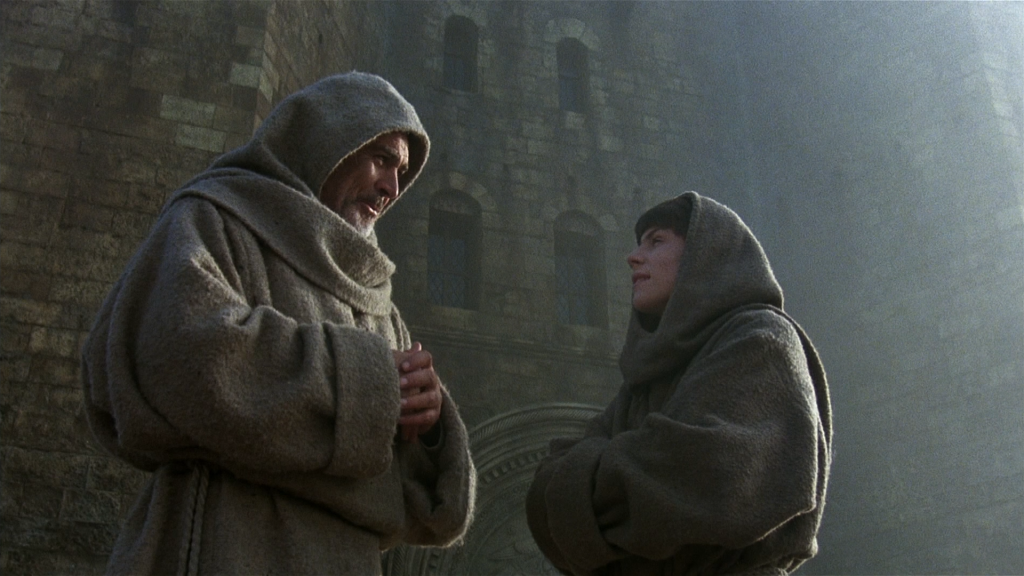
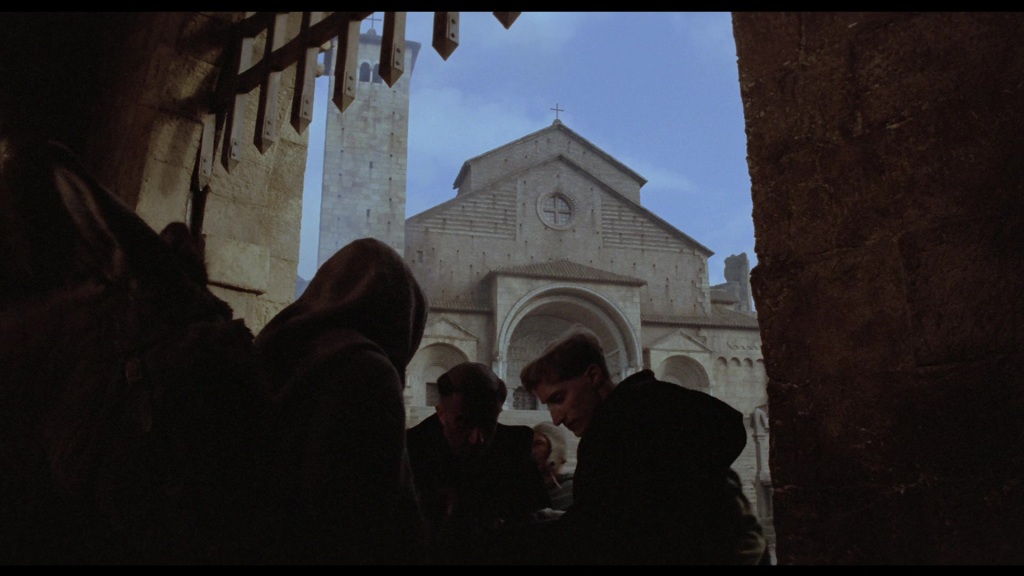
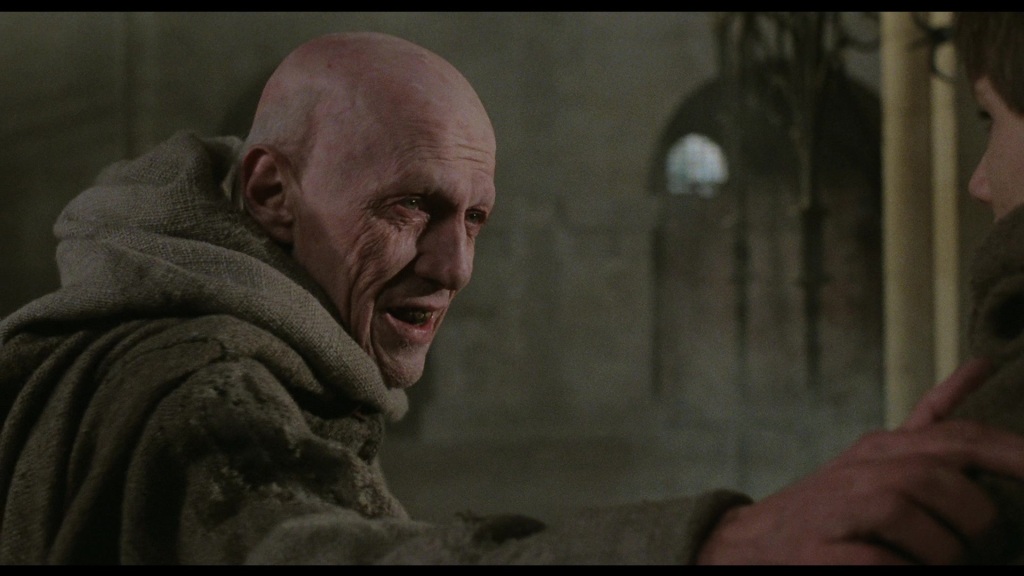
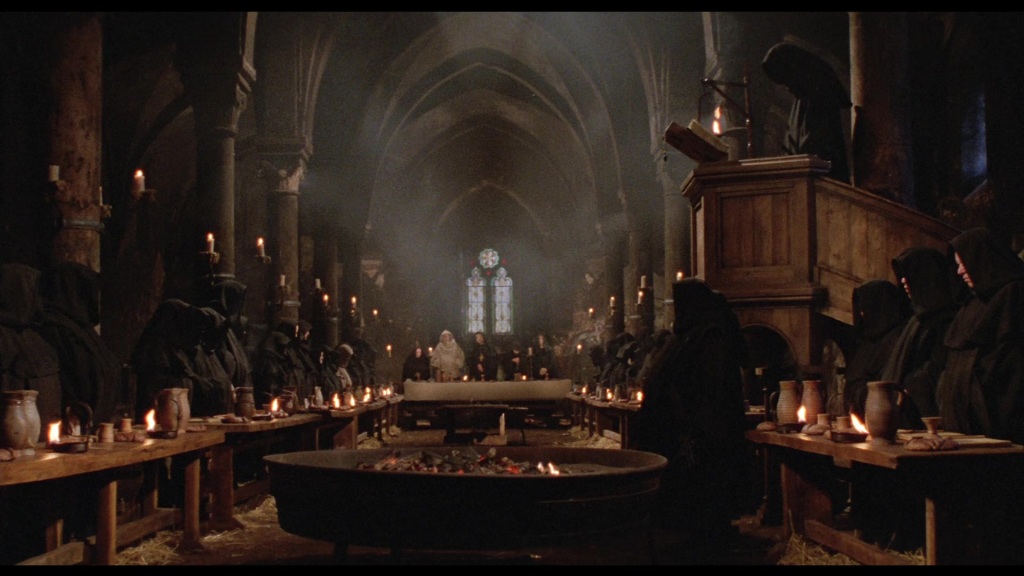
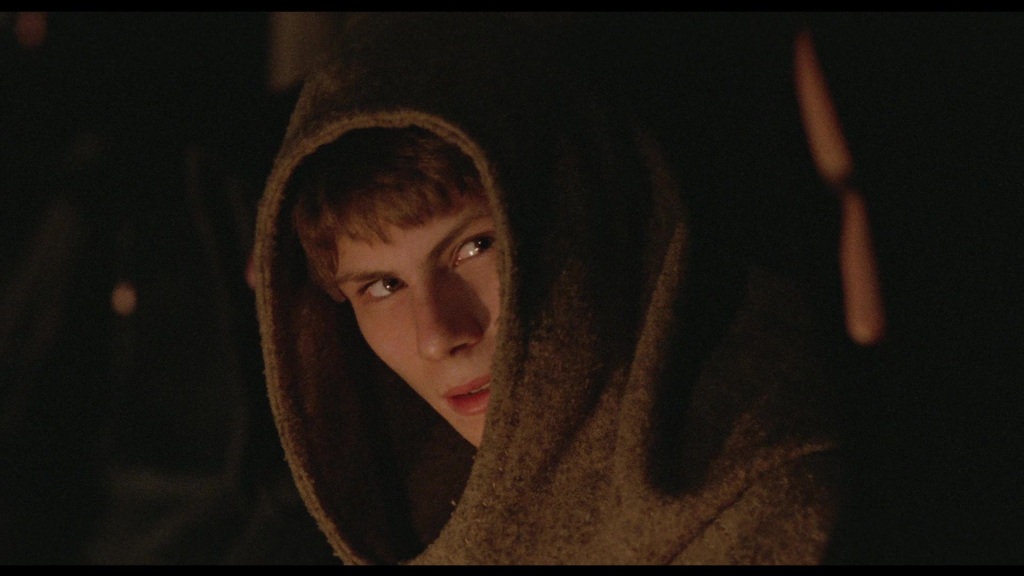
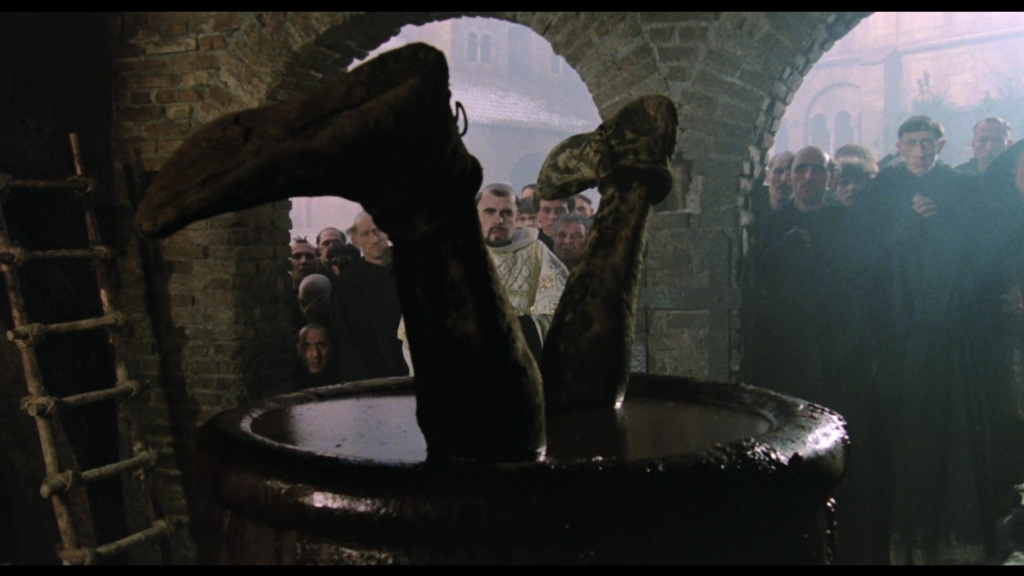
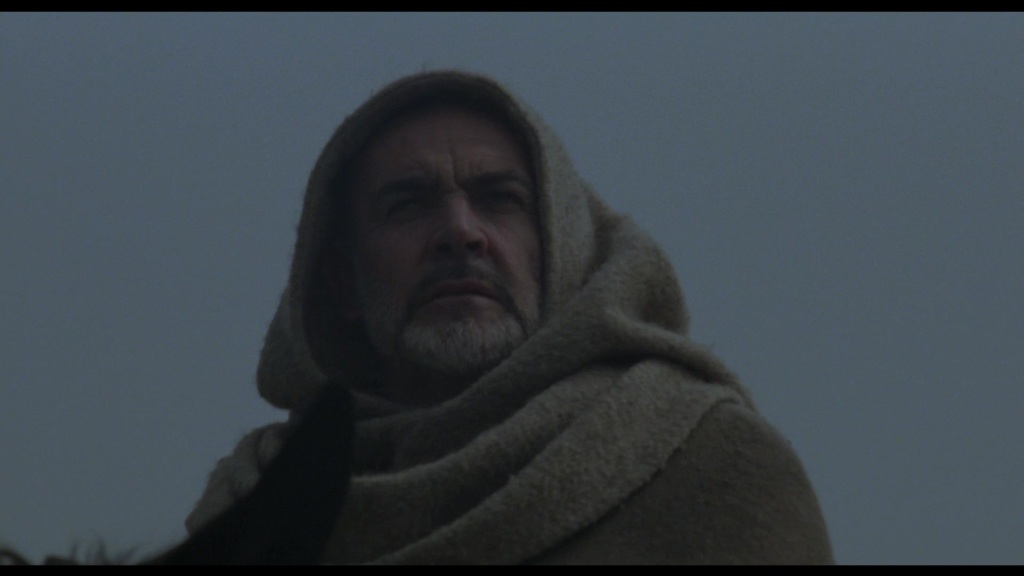
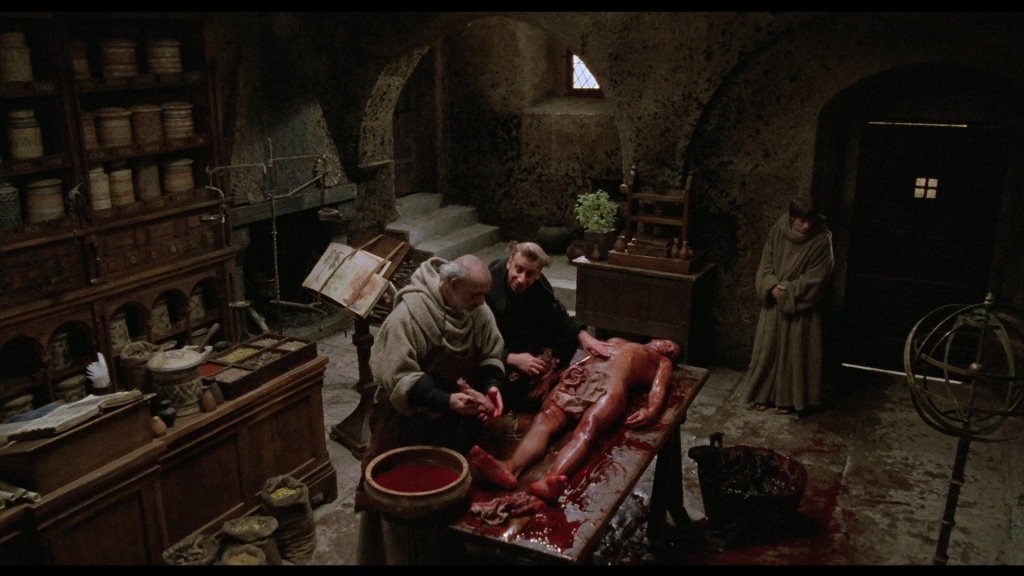
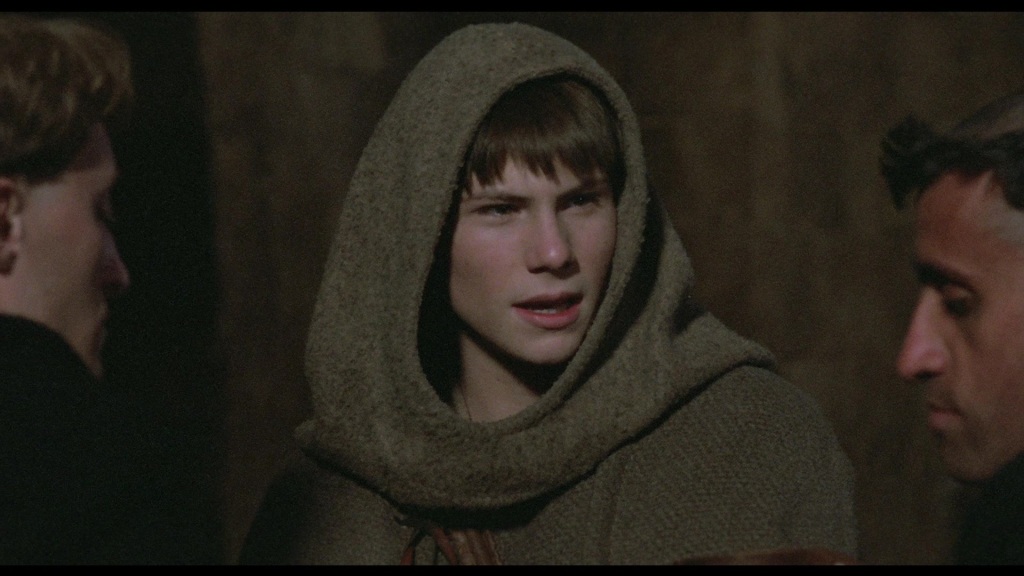
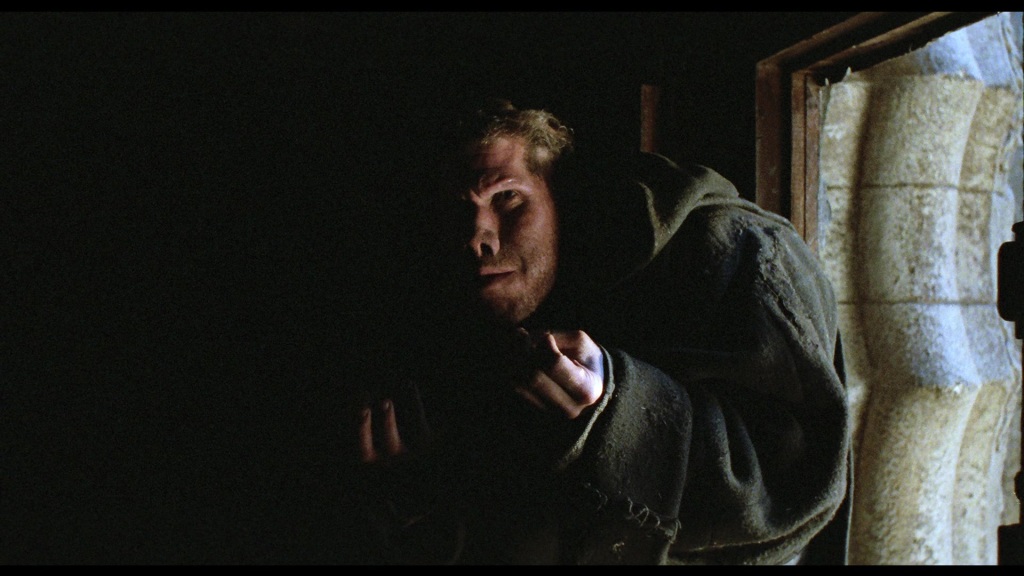
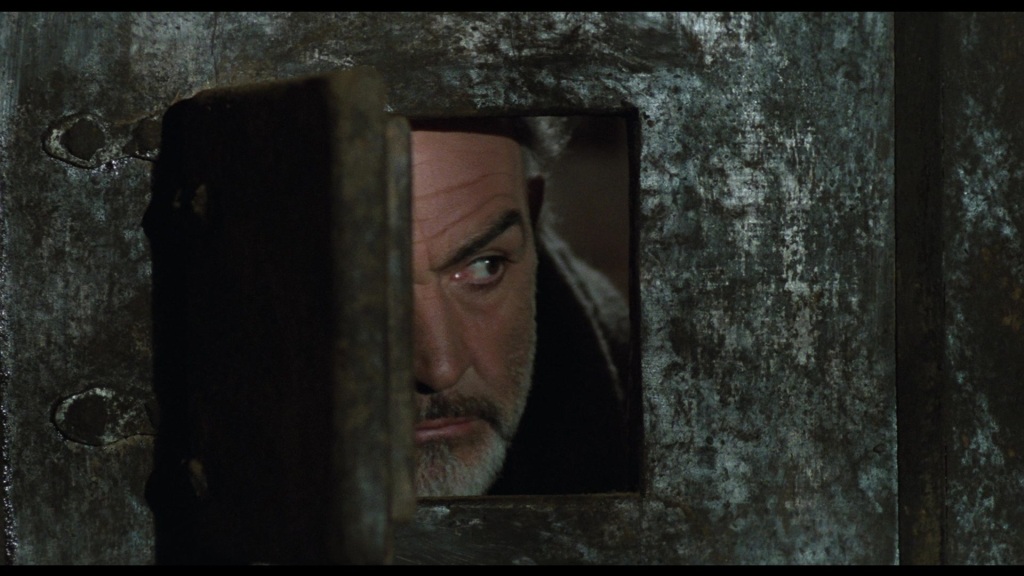
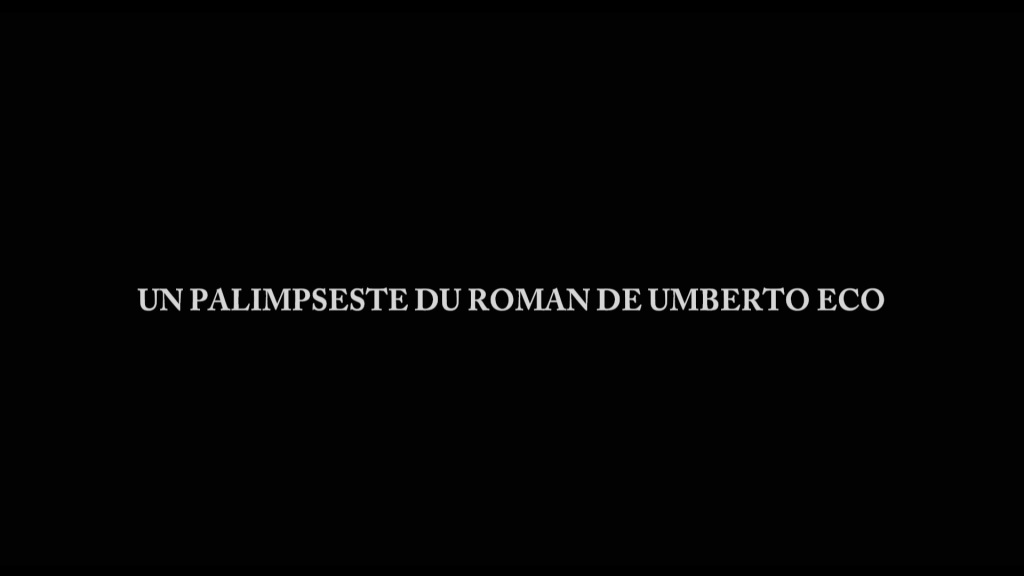
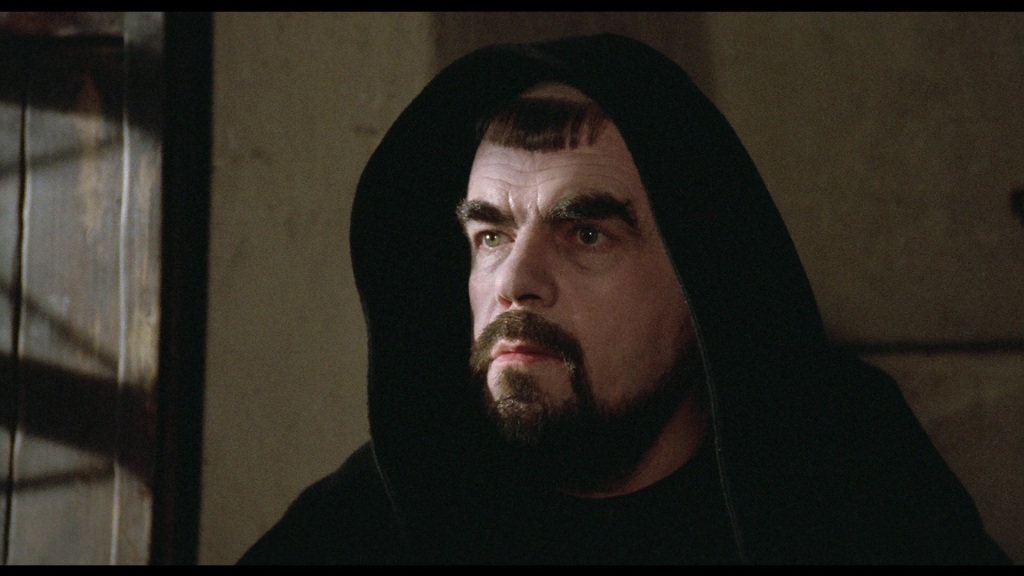

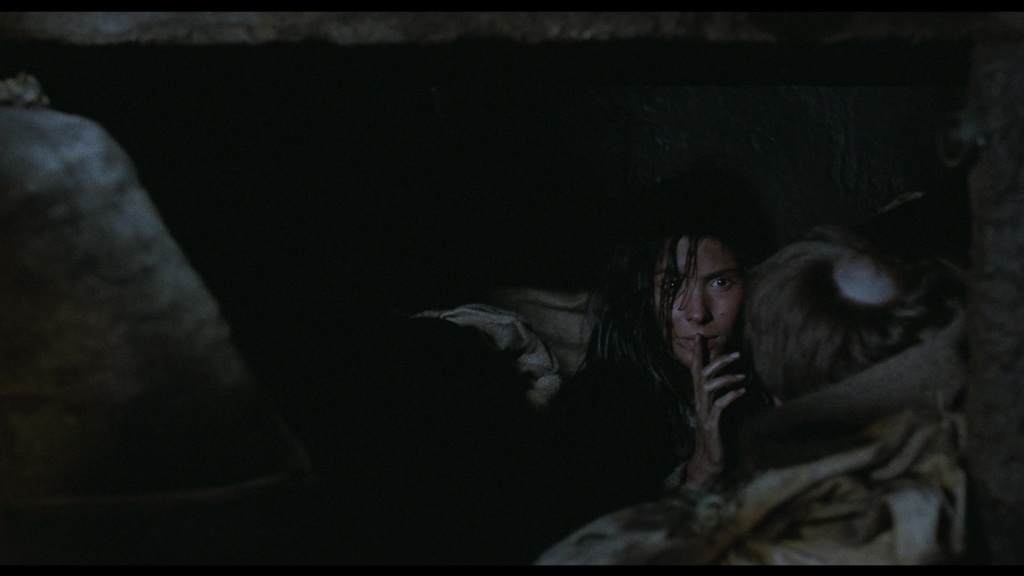
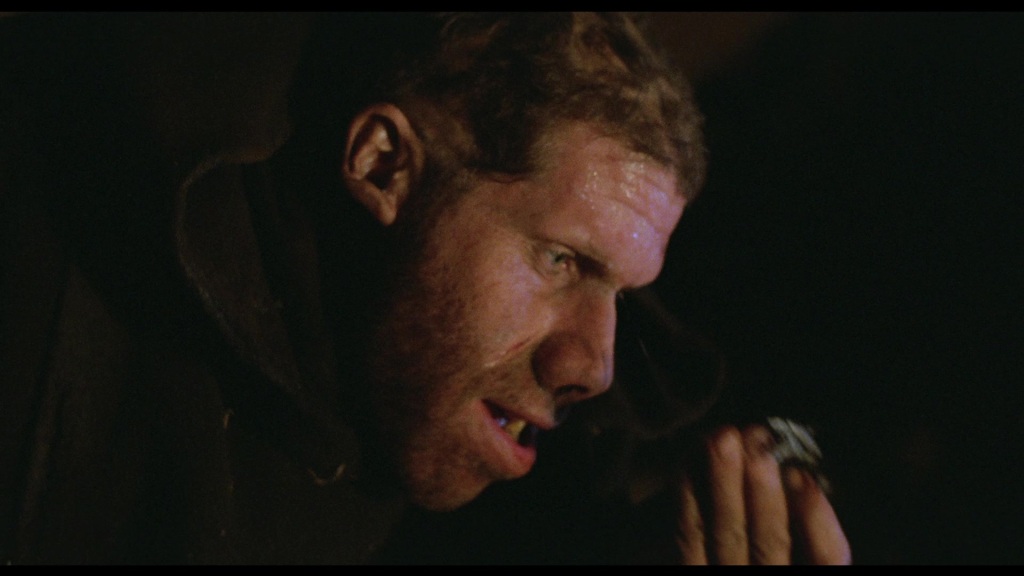
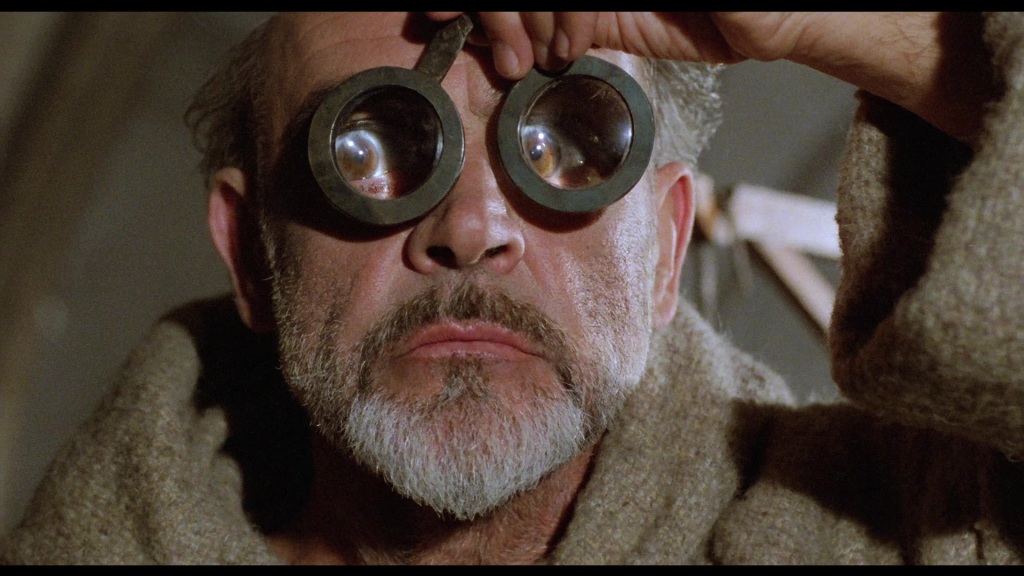
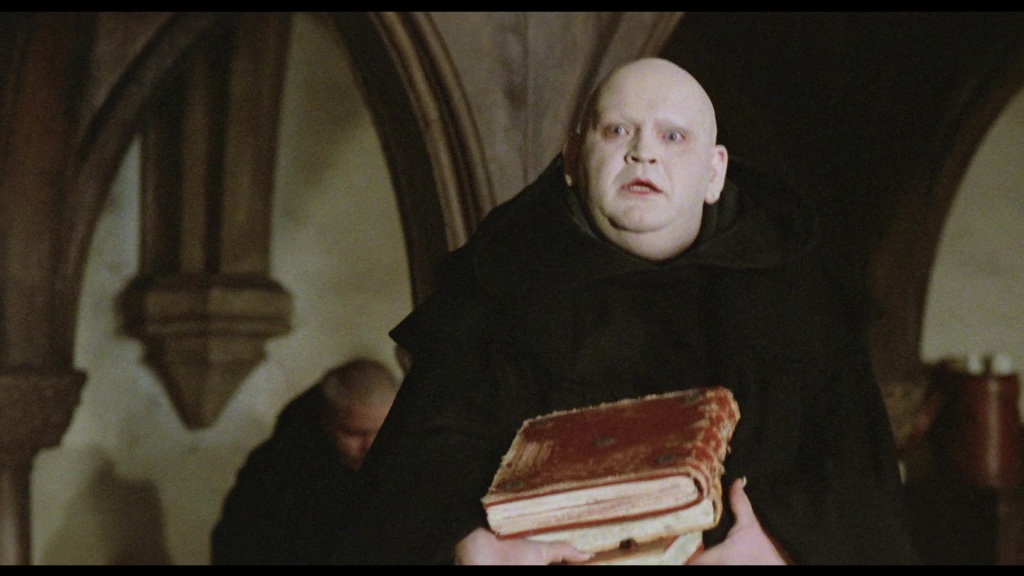
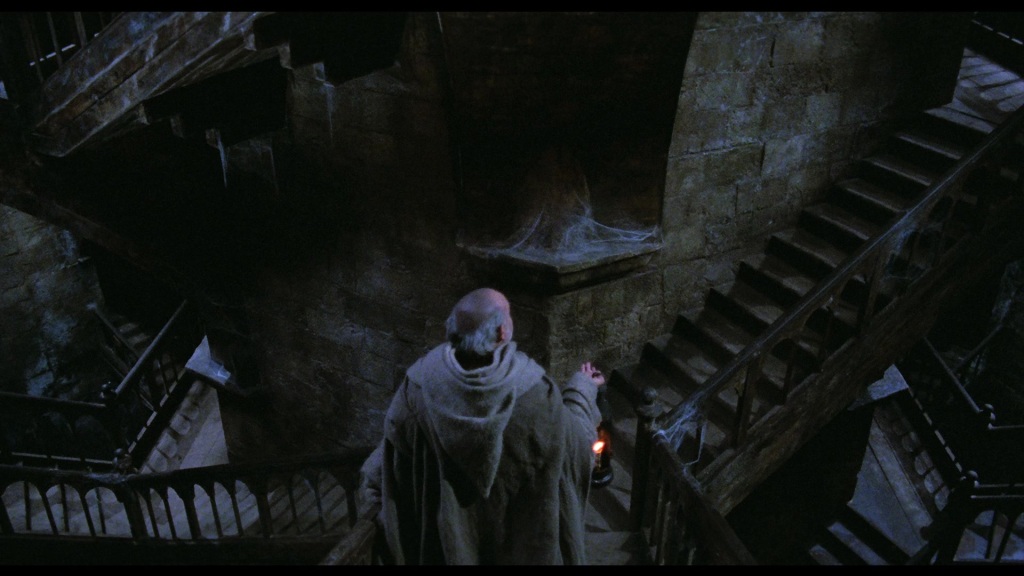
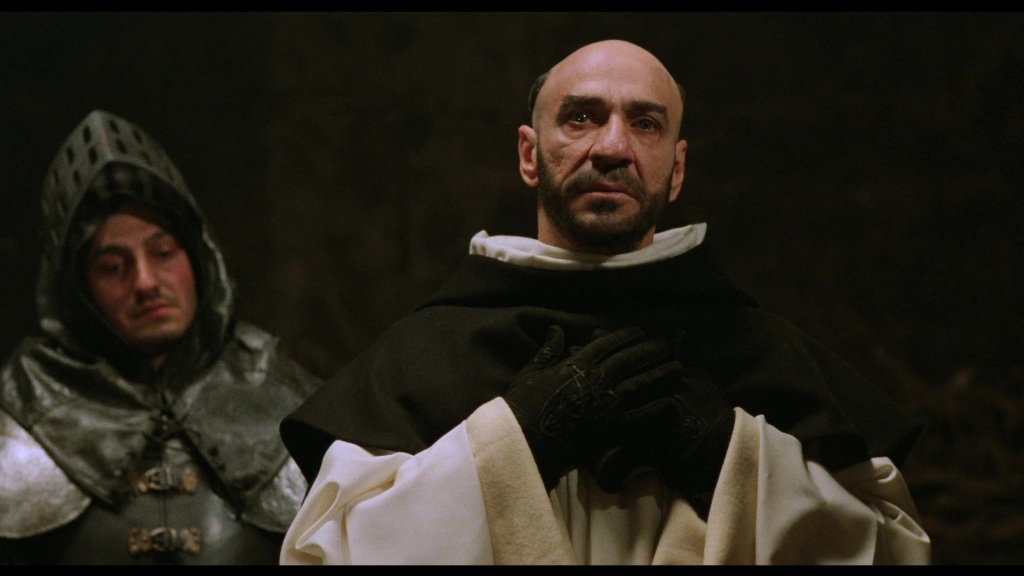
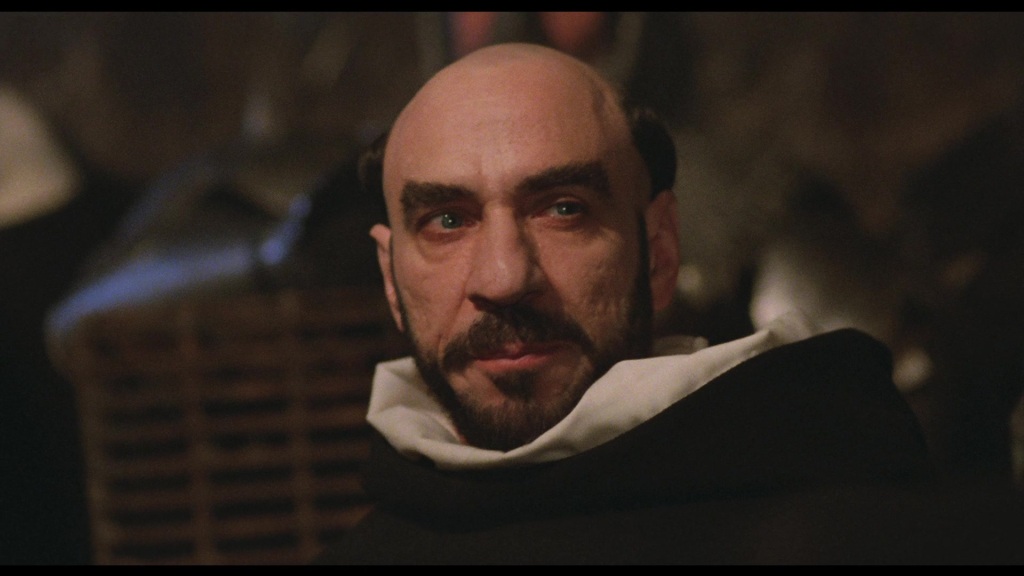
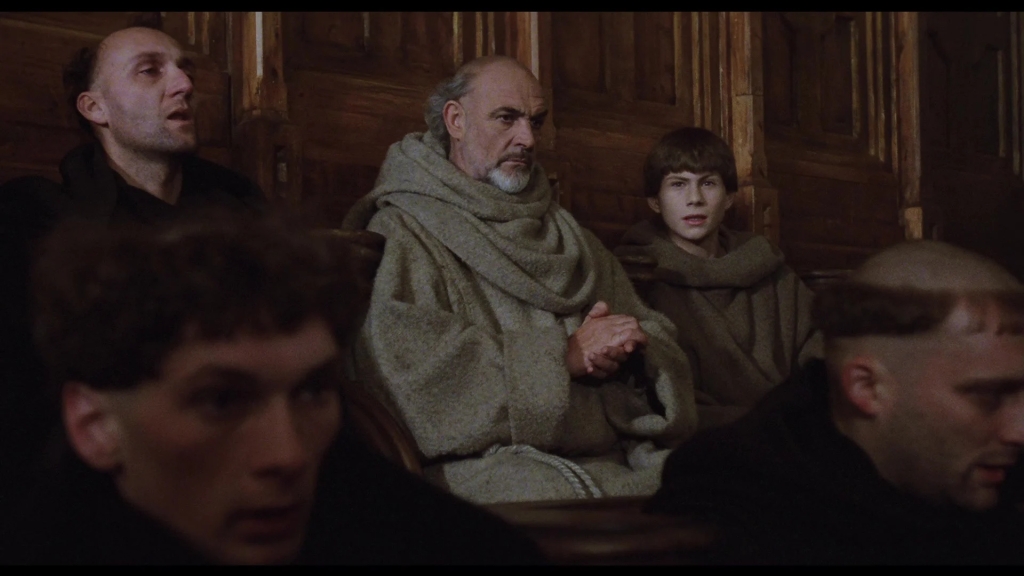
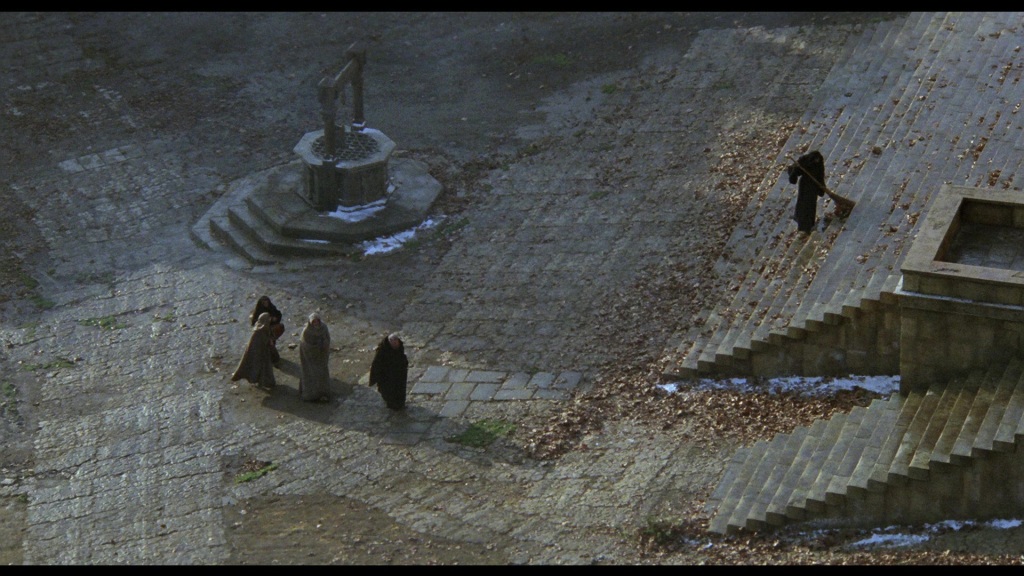
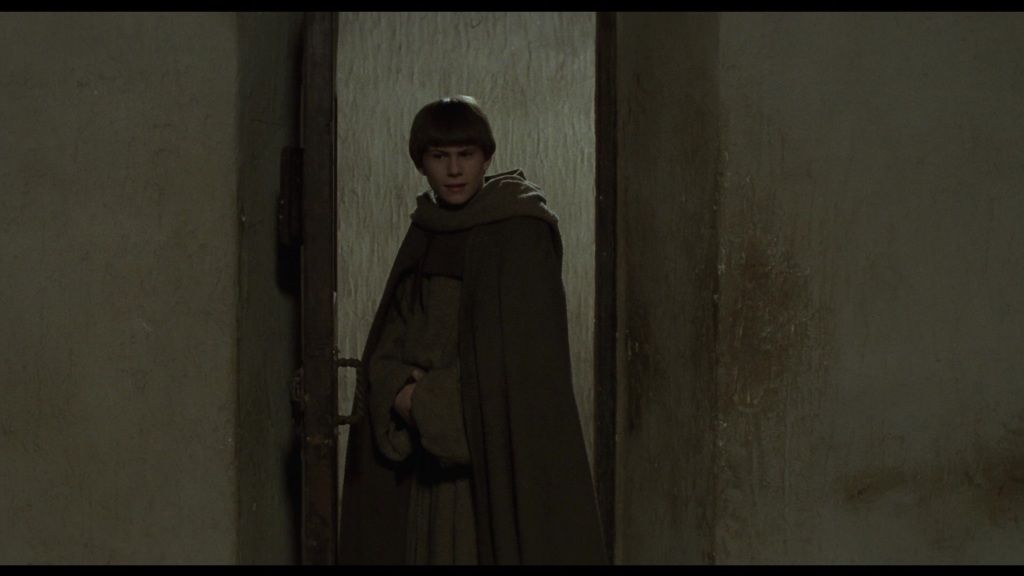
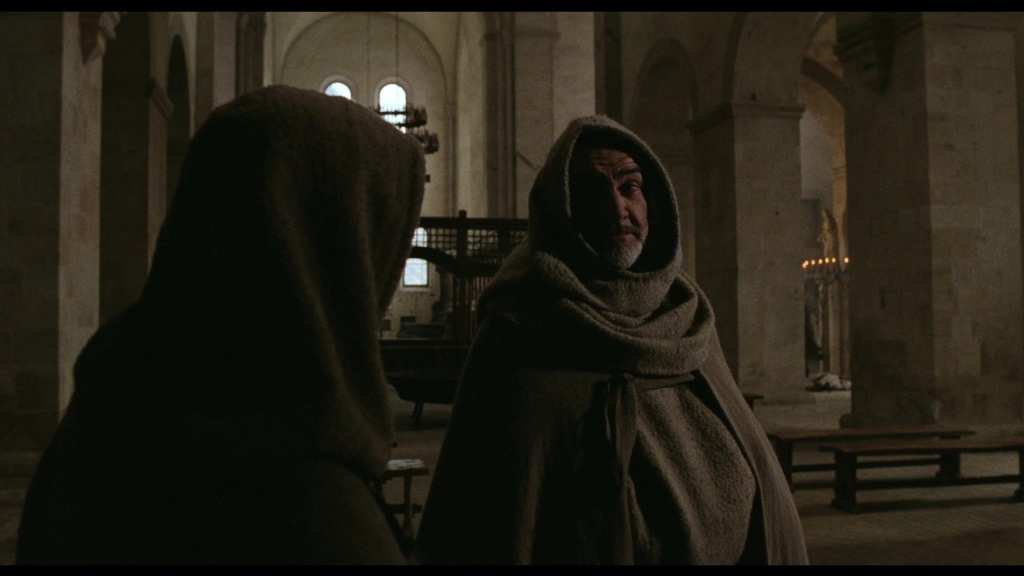
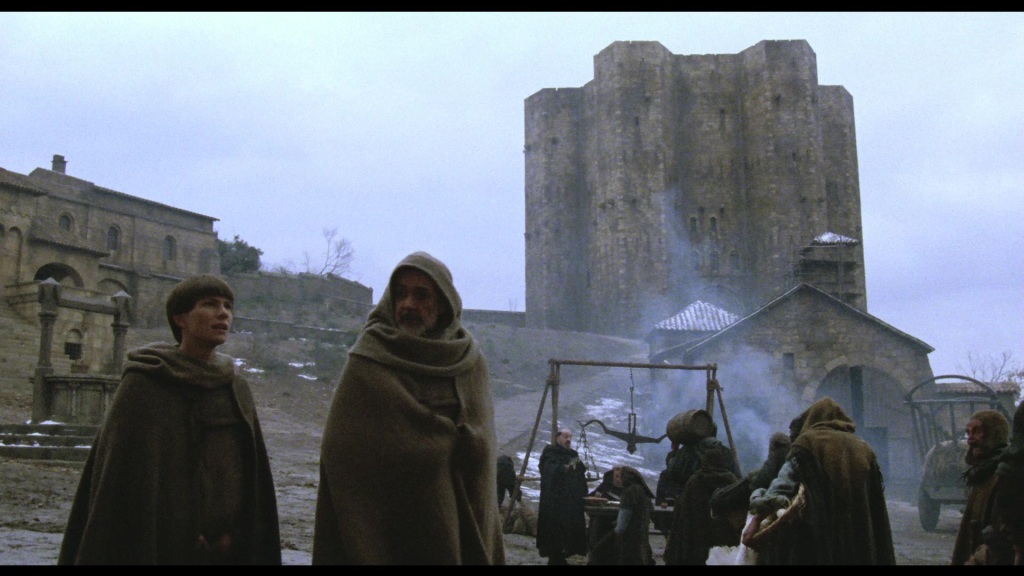
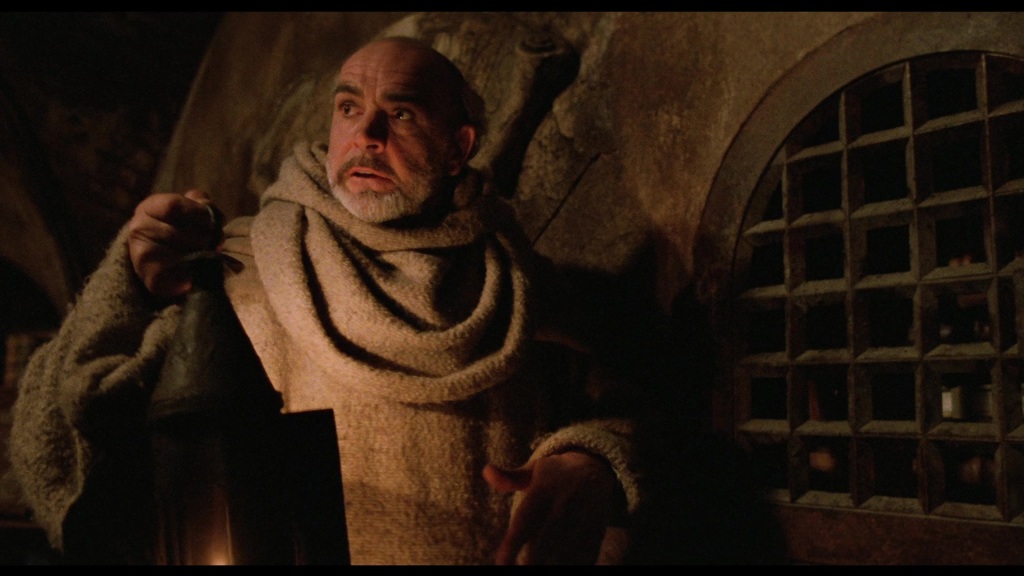
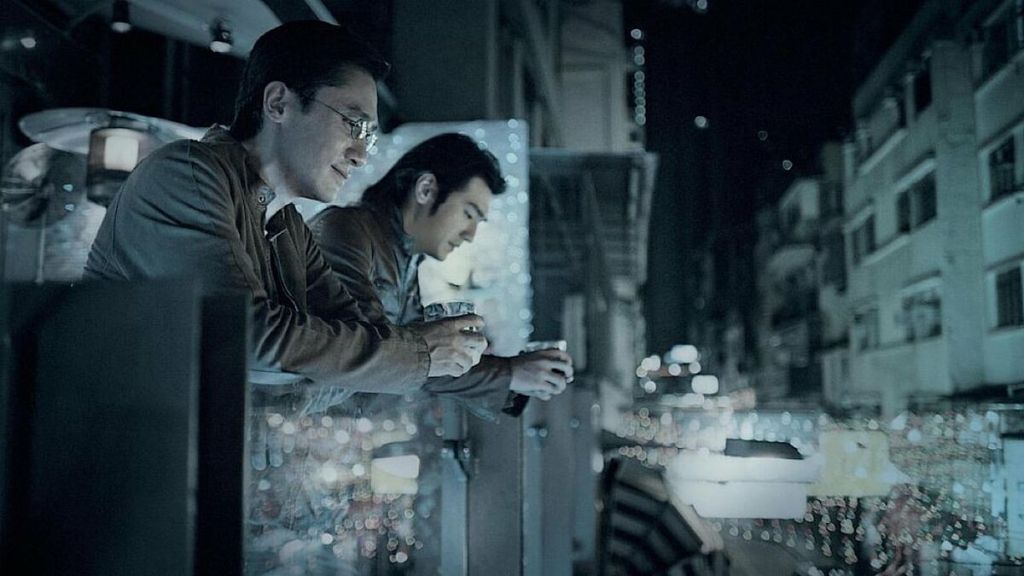
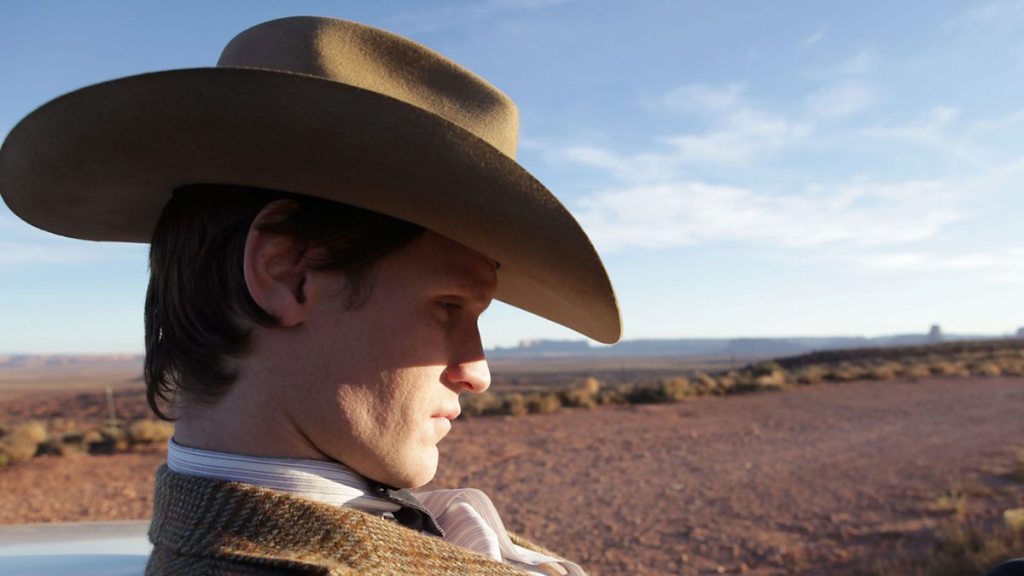
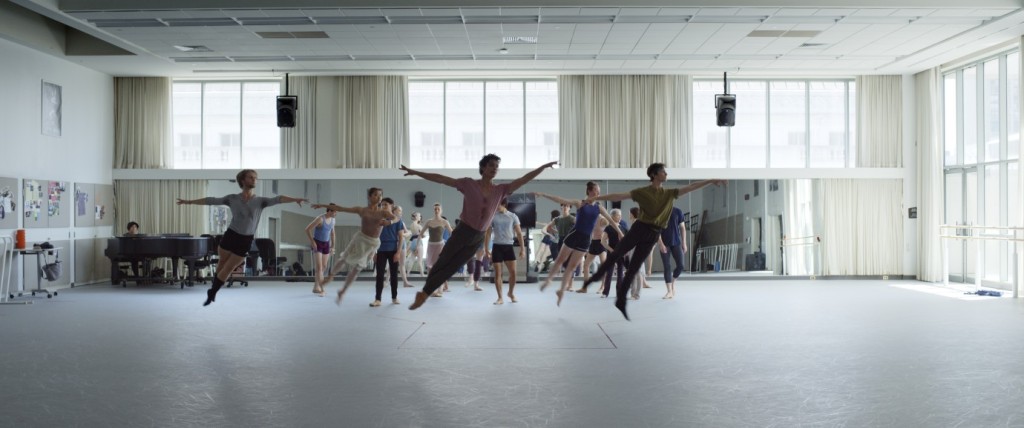
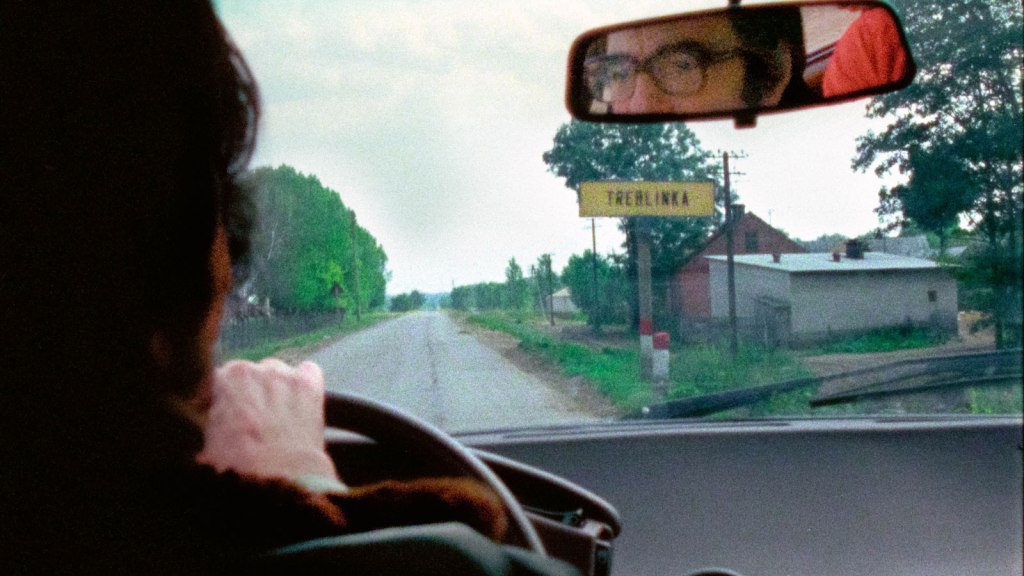
Leave a comment